Product Walkthroughs vs Product Tours: Which One To Use?
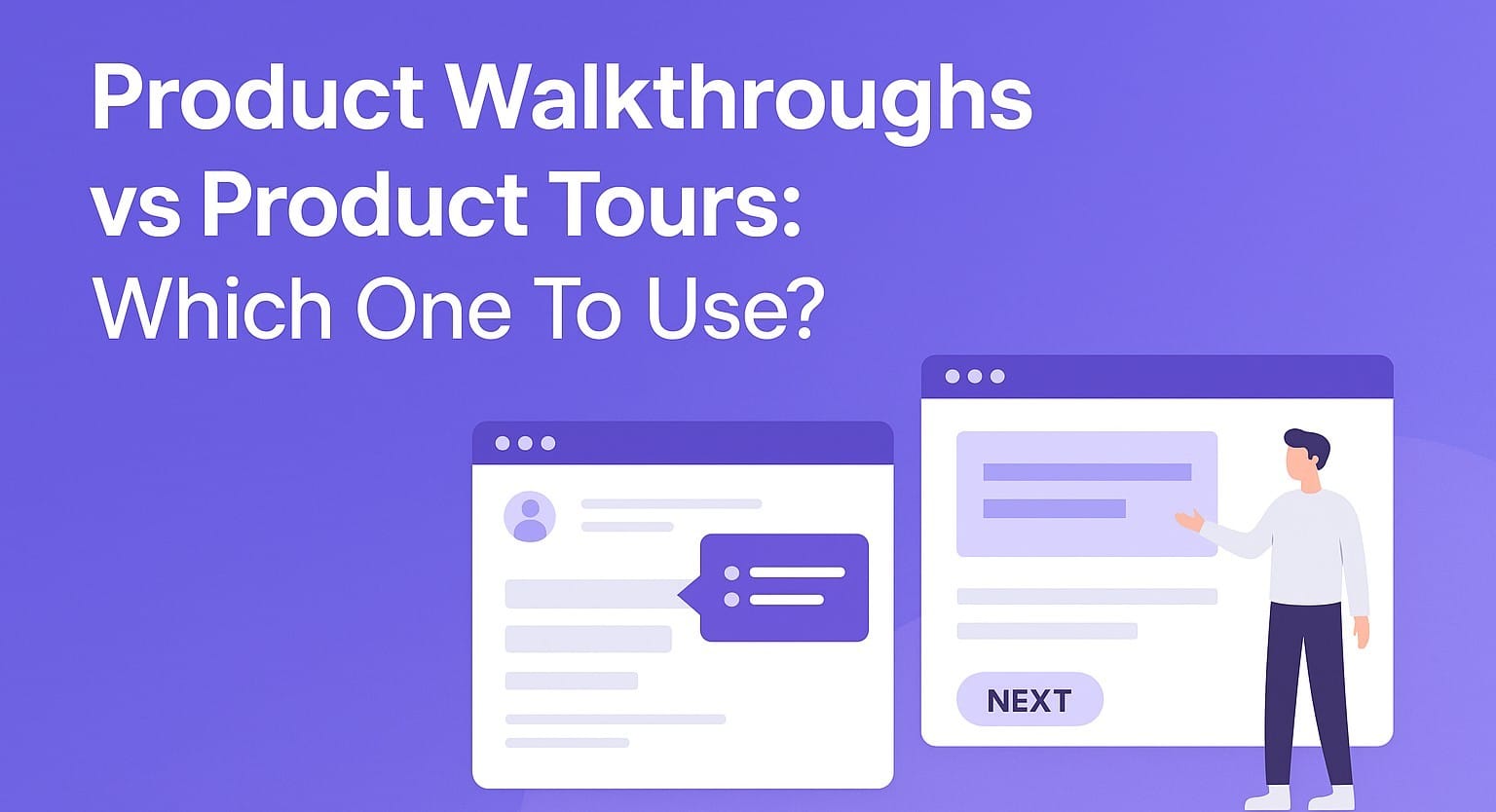
Key Highlights
Walkthroughs guide users inside the app during onboarding process.
Tours give prospects external, no-signup product previews.
Walkthroughs simplify first steps and highlight key actions.
Tours generate leads and reduce repetitive training.
Combining both boosts activation and long-term adoption.
Top tools include SmartCue, Navattic, UserGuiding, Appcues, and Whatfix.
SmartCue turns demos into personalized experiences that drive conversions.
A new user signs up, logs in, and within minutes hits a wall. The dashboard feels cluttered, the different features aren’t clear, and frustration builds. Instead of clicking around, they close the tab, and you lose a customer you worked hard to win.
Guiding users to that “aha” moment quickly is tough. Some need direct, in-app prompts to stay on track. Others want space to explore without pressure. Miss the mark, and you invite confusion, churn, and wasted acquisition dollars.
That’s why SaaS teams constantly ask: Should we run a product walkthrough or a product tour? The two may sound alike, but they deliver very different outcomes.
In this blog, we’ll cut through the noise by showing you what sets walkthroughs and tours apart, when to use each, and how to combine them to turn curious sign-ups into loyal customers.
What Is The Difference Between a Product Walkthrough and a Product Tour?
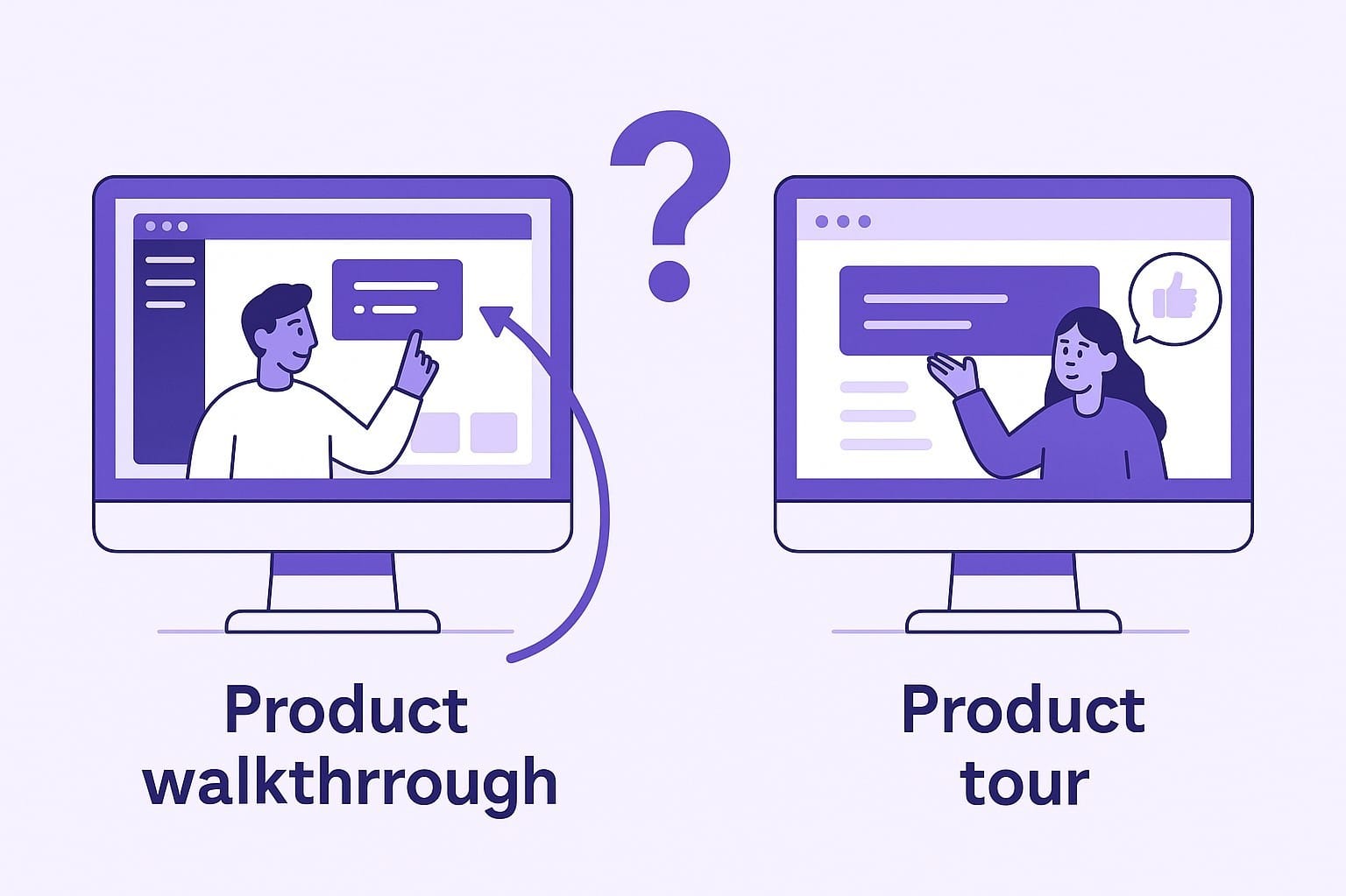
At first glance, product walkthroughs and product tours may appear to be the same thing. Both guide people through your product, both highlight important features, and both aim to reduce friction. But the way they're delivered and the goals they serve are very different.
What Does A Product Walkthrough Do?
A product walkthrough happens inside your app. It provides a structured, step-by-step flow that shows users where to click, what each feature does, and how to get started successfully.
SaaS products like Asana use walkthroughs to help users complete their first steps, Adobe Premiere Pro uses them to introduce new features, and platforms like Channeltivity launch interactive walkthroughs at first-time login to guide both admins and partners.
What a Product Tour Delivers?
A great product tour happens outside your app. It is an interactive demo that prospects can access on your website, through an email, or via social media without having to log in or sign up. This gives them a chance to experience your product’s value quickly and without friction.
Product tour examples include Ramp, which shows how its finance platform works without asking for sensitive data, while Mixpanel and Fivetran use tours to explain advanced features and integrations.
Tools like SmartCuego further by building product tours and walkthroughs in one place, allowing teams to support different user segments with ease.
Start building product tours that win customers. Book your live demo with SmartCue now.
How to Get the Most Out of Product Walkthroughs?
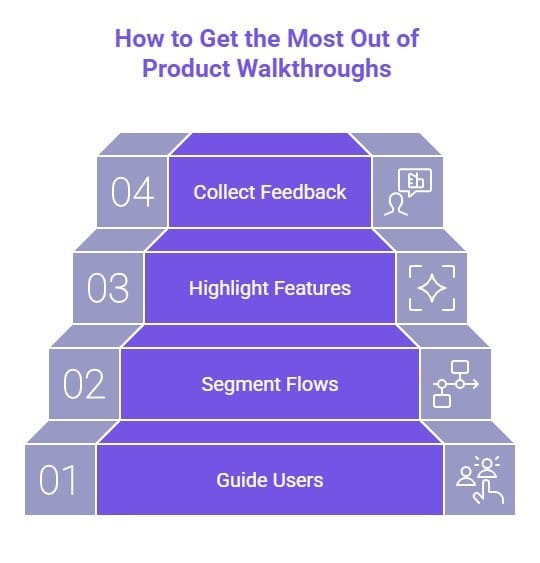
Too many SaaS teams treat walkthroughs as a checklist: highlight a few buttons, show a tooltip, and call it user onboarding. The result? Users click through without learning anything, then leave before they ever reach the value of your product.
A good walkthrough doesn't just show where things are; it also shows how they work. It clears the path to the "aha" moment, the point at which a customer feels the product is working for them. That's why walkthroughs work best during customer onboarding or free trials, when every click matters.
To make them count:
Guide users to value fast by walking them through the essential actions, not every feature.
Adapt the journey by segmenting flows based on user type or experience level.
Focus attention where it matters using tooltips, overlays, or hotspots that highlight the essential features at the right time.
Close the loop with feedback to refine and improve the onboarding flow.
When done well, walkthroughs simplify onboarding, boost confidence, and accelerate activation, turning a new signup into an engaged user who sticks around.
Where Do Interactive Product Tours Work Best?
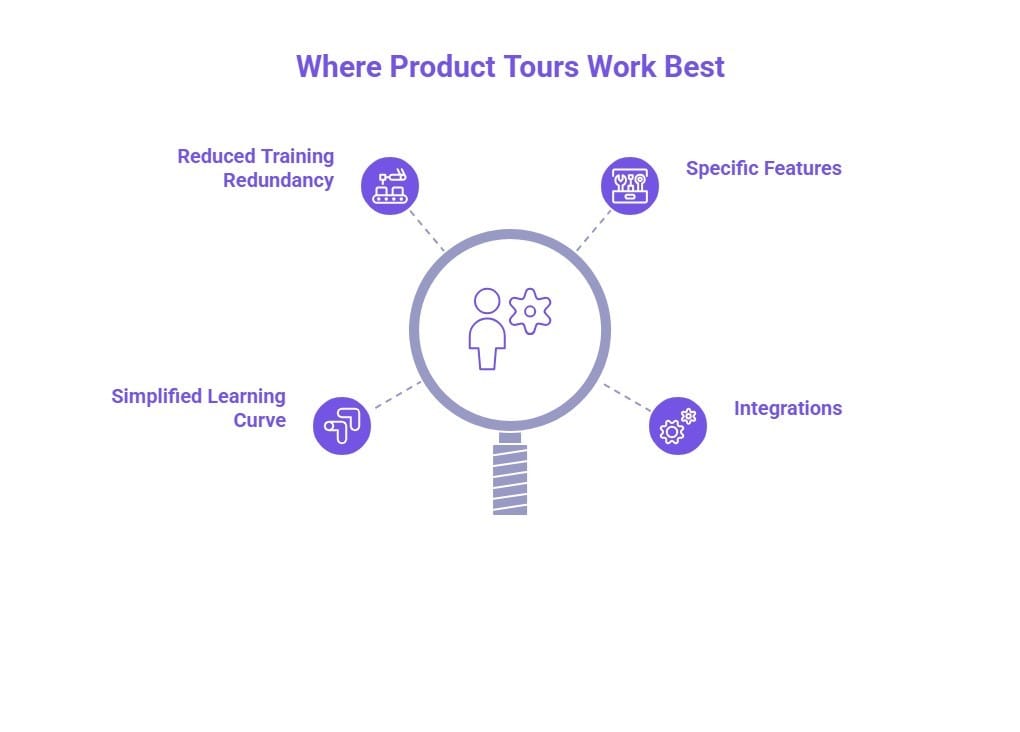
Unlike walkthroughs, interactive product tours don’t stay locked inside your app. You can place them on your website, drop them into email campaigns, or share them across social channels. They let prospects explore your product on their own terms, no signup required, which makes them a great way to capture attention and build a pipeline.
Product tours work best when:
You want to give prospects a quick preview of the main features
Your product has a learning curve or requires sensitive data, which makes free trials difficult
You need to reduce repetitive training for sales and customer success teams
You want to showcase specific features, integrations, or more advanced features before users commit
An effective product tour builds trust early, allows people to learn at their own pace, and creates a smooth path into a free trial or paid account, so users experience value quickly and conversions rise.
Take it further with our product launch template and turn tours into a launch-day growth driver.
How to Use Product Walkthroughs and Tours Together?
If you own onboarding, growth, or product marketing, you've likely felt the limits of using walkthroughs or tours in isolation. Walkthroughs drive activation inside the product, while tours spark interest outside it.
However, when you connect them, you create a seamless journey that guides users smoothly from their first impression to activation.
Here are some practical ways to put them together:
Strategy | How it works | Why it helps |
|---|---|---|
Embed tours in onboarding flows | Add a quick demo before or alongside the walkthrough | Gives users an early “aha” moment and motivates deeper exploration |
Re-engage inactive trial users | Send product tours in reminder or win-back campaigns | Surfaces' core value and pulls stalled users back into the trial |
Use exit intent pop-ups | Trigger a tour link when users hesitate or abandon | Intercepts drop-offs by showing value at the moment of doubt |
Offer a demo before the walkthrough | Let users preview a lightweight tour, then guide them in-app | Builds confidence early and reduces friction in onboarding |
When you layer tours and walkthroughs intentionally, you’re not just showing features—you’re telling a value story that turns curiosity into commitment.
Need Help With Walkthroughs & Tours? Here Are 5 Tools To Try
Now that you know the difference between walkthroughs and tours, the next step is choosing the right no-code tool. The right platform makes it easy to build, launch, and measure onboarding experiences without heavy engineering.
Here are 5 tools to get you started.
1. SmartCue
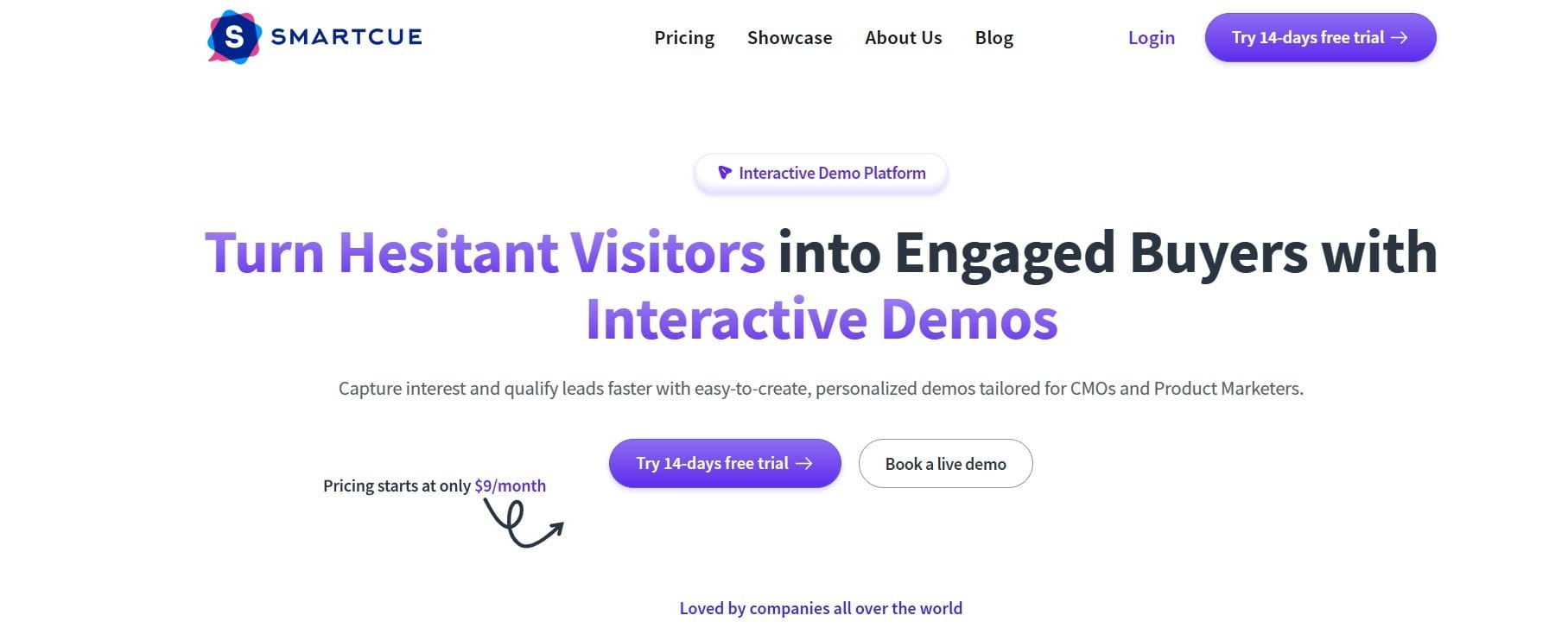
Imagine you’re launching a new feature and want prospects to try it instantly, without needing to book a call or watch a long video. That’s where SmartCue shines. With its Chrome extension, you can record a flow in minutes and turn it into a personalized, shareable demo.
What Makes Smartcue Stand Out?
One-click Chrome extension to record and customize demos
Personalization with pan, zoom, callouts, and segment-based guides
Share anywhere: embed on websites, share links, or export as PDF, GIF, or video
Analytics on time spent, drop-offs, and impressions for better buyer insights
Collaboration features with integrations to HubSpot, Salesforce, and more
Where it shines:
Quick demo creation without technical expertise
Higher engagement compared to static videos or screenshots
Personalization for different user journeys and segments
Strong analytics to measure demo impact and ROI
Where It Falls Short:
As a newer platform, SmartCue’s ecosystem is still growing, but updates are frequent and customer-focused
How Much Does It Cost?
Essential: $99 per user/year
Growth: $300 per user/year
Enterprise: Custom pricing on request
Who Will Love It?
Perfect for product marketers, sales teams, and growth leaders who need to scale demo creation, qualify leads faster, and make onboarding or feature launches more engaging.
2. Navattic
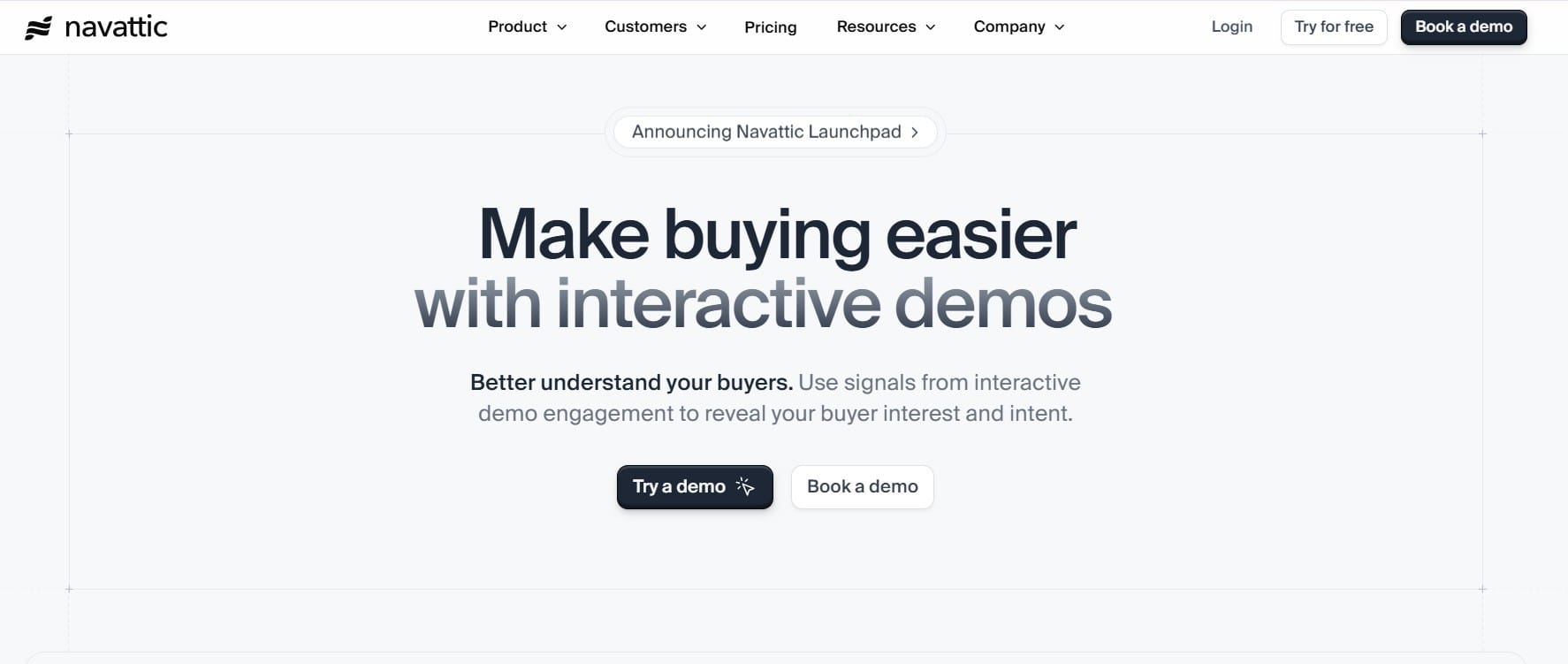
Now picture a prospect landing on your site, clicking through a demo, and converting before they ever talk to sales. Navatticis built for that moment. It embeds interactive demos right on your website to capture high-intent visitors early.
What Makes Navattic Stand Out?
Interactive demos that can be embedded on websites, landing pages, or shared via links
Personalization options with dynamic variables, interest-based routing, and multilingual support
Analytics and playbooks that reveal buyer intent and engagement
Real-time alerts via Slack and email when prospects interact with demos
Integrations with HubSpot, Salesforce, Marketo, and other GTM tools
Why Teams Love It:
Captures high-intent website visitors and converts them into leads
Helps sales and presales teams share demos without relying on engineers
Provides detailed engagement insights to prioritize and qualify accounts
Supports offline demos for tradeshows and events
Where It Falls Short:
Demos follow predefined paths, limiting open exploration
Requires frequent updates to stay aligned with product changes
How Much Does It Cost?
Starter: Free
Base: $500/month
Growth: $1,000/month
Enterprise: Custom pricing on request
Who Will Love It?
Ideal for sales, marketing, and presales teams at SaaS companies looking to accelerate pipeline, reduce demo prep time, and uncover intent signals from prospects earlier in the buyer journey.
3. UserGuiding
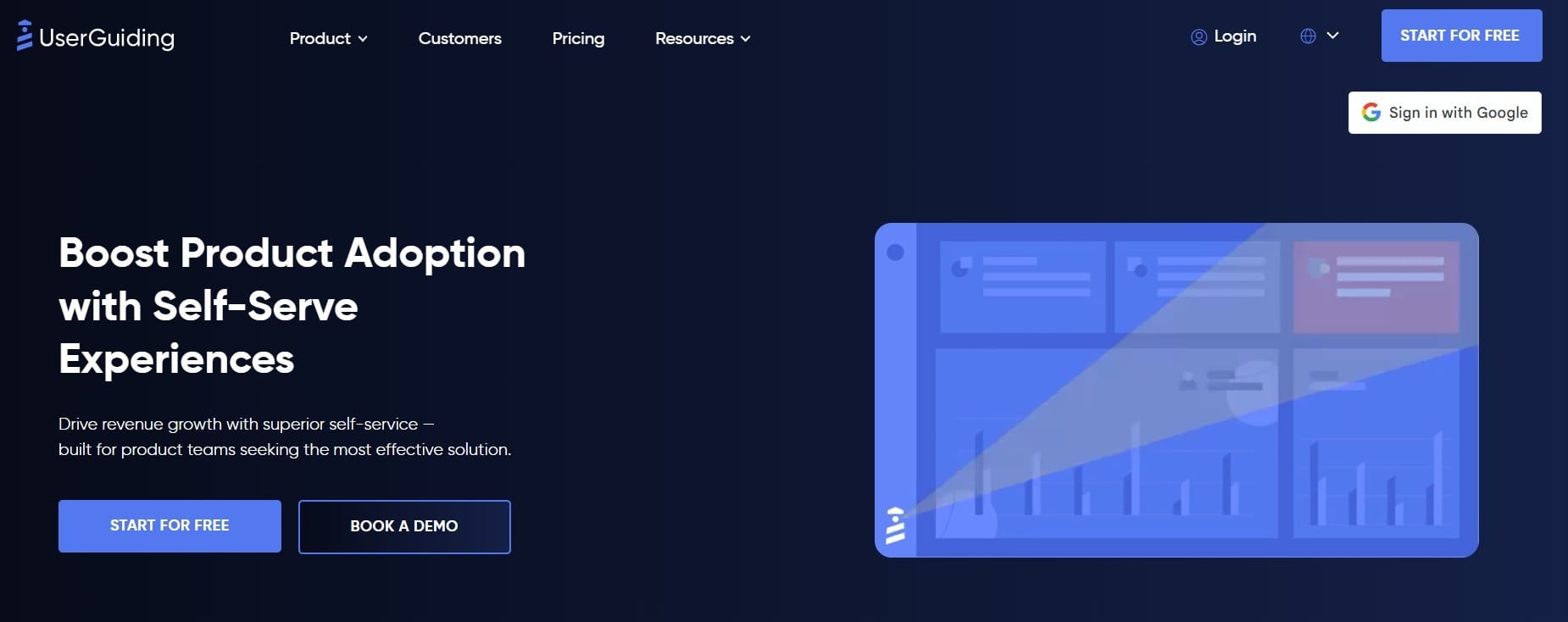
You’ve just shipped a product update, and you need users to adopt it without bombarding support. UserGuiding helps you deliver in-app walkthroughs, checklists, and resource centers so customers can self-serve.
What Makes UserGuiding Stand Out?
Chrome extension for quick setup and instant publishing
In-app guides, modals, tooltips, hotspots, and onboarding checklists
Built-in analytics, segmentation, and personalization to tailor flows
Resource centers and knowledge bases to deliver self-service support
AI-powered assistant for multilingual, 24/7 customer help
The Perks:
Fast implementation (live within minutes)
Comprehensive toolkit for onboarding, adoption, and support
Strong ROI with affordable pricing compared to competitors
Reduces reliance on engineering or external tools
The Pain points:
Some users find the UI slightly overwhelming at first
Advanced customizations may require CSS/HTML knowledge
How Much Does It Cost?
Starter: $174/month
Growth: $349/month
Enterprise: Custom pricing on request
Who Will Love It?
Best for product managers and customer success teams who want an all-in-one, affordable solution for onboarding, feature adoption, and in-app support without coding.
4. Appcues
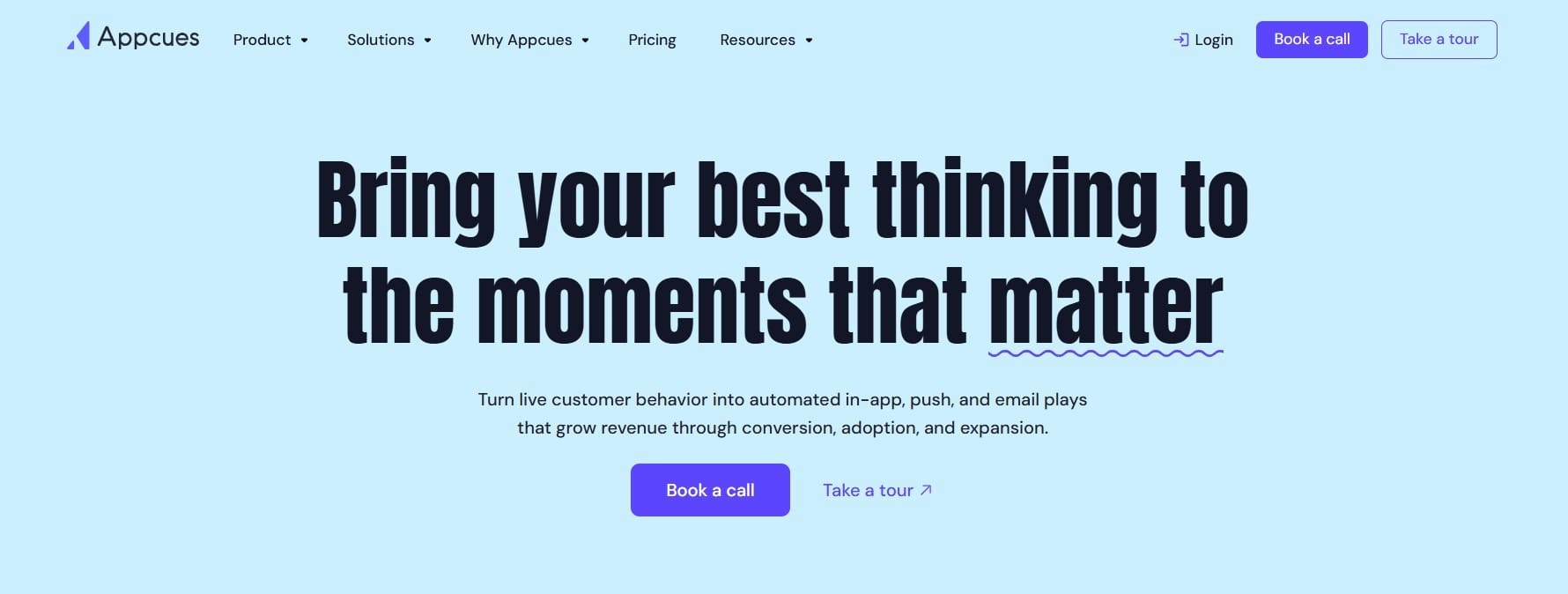
Think of Appcues as the storytelling layer inside your product. It goes beyond walkthroughs, letting you combine in-app flows with emails and push notifications to guide users across the full journey.
What Makes Appcues Stand Out
Drag-and-drop builder for creating in-app flows without coding
Targeting based on live behavior, lifecycle stage, or account data
Multi-channel messaging: in-app, push, and email
Advanced analytics to measure adoption, activation, and user retention
Integrations with Segment, HubSpot, Salesforce, and more
What Makes It Awesome?
Enterprise-ready with security, scale, and strong integrations
Flexible design tools to create on-brand user experiences
Proven impact on activation, adoption, and expansion metrics
Great for PLG (product-led growth) teams
What Could Be Better?
The editing interface can feel clunky compared to lighter tools
Some users report that integrations can be unstable at times
How Much Does It Cost
Start – $300/month
Grow – $750/month
Enterprise – Custom pricing on request
Who Will Love It
Ideal for product-led growth teams and enterprises that need advanced targeting, in-app messaging, and cross-channel engagement to scale adoption and customer retention.
5. Whatfix
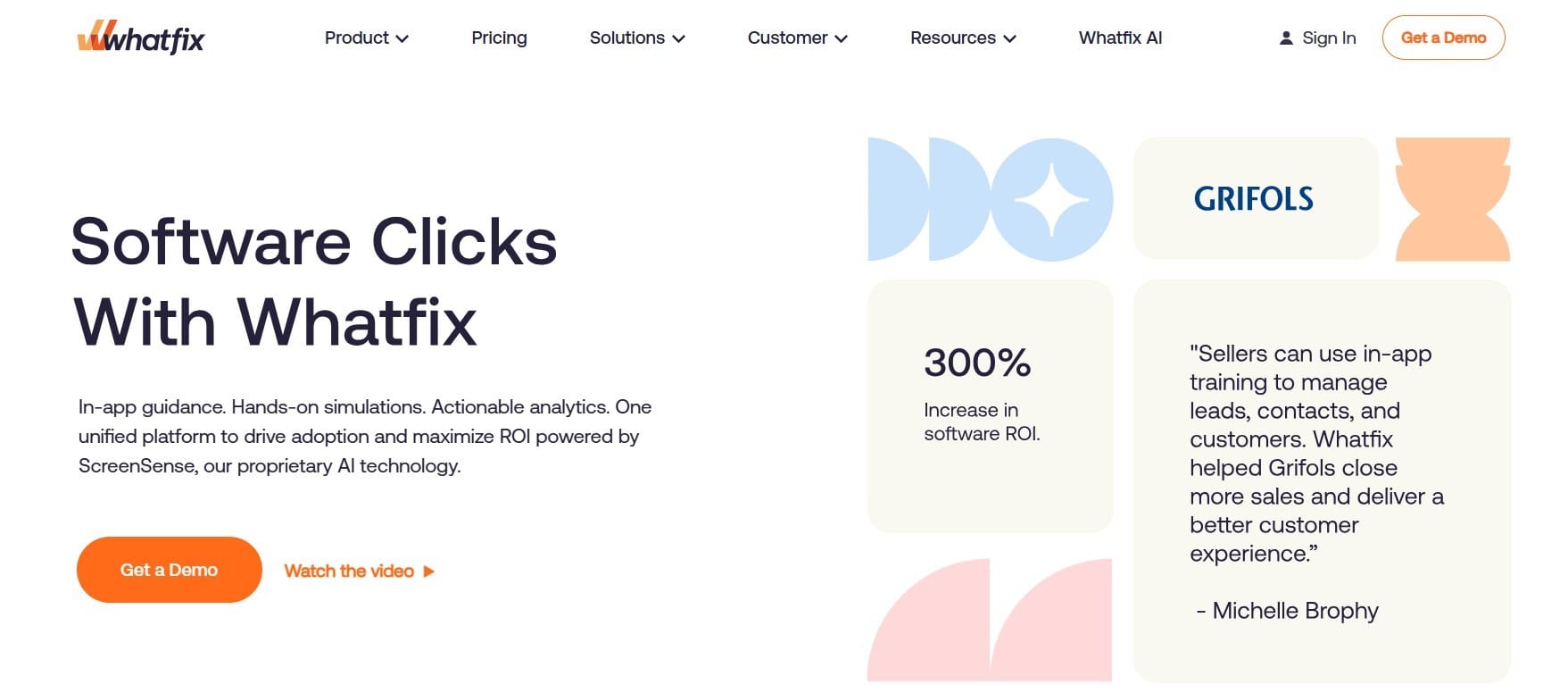
Rolling out a new CRM to thousands of employees across global offices? Whatfix is designed for that scale. With AI-driven guidance and simulations, it helps enterprises train, onboard, and drive adoption across web, desktop, and mobile.
What Makes Whatfix Stand Out?
AI-powered in-app guidance with flows, task lists, pop-ups, and smart tips
Hands-on simulations for sandbox learning and risk-free training
Advanced product analytics to track engagement and user behavior
AI agents for content authoring, user support, and workflow insights
Enterprise-ready with SOC compliance, global presence, and strong industry use cases
The Highlights:
Highly scalable for large enterprises across industries like banking, healthcare, education, and insurance
Reduces customer onboarding friction and accelerates time-to-value for new users
Strong track record with Fortune 1000 companies and global enterprises
Recognized leader in Gartner, Forrester, and Everest Group assessments
The Hiccups:
A complex feature set may feel heavy for smaller SaaS teams
Pricing is enterprise-oriented, which may not suit early-stage startups
How Much Does It Cost?
Whatfix offers custom pricing tailored to enterprise needs. Interested users can request a demo or contact sales for details.
Who Will Love It?
Best for large enterprises and fast-scaling organizations that need enterprise-grade adoption tools, contextual guidance, and analytics to improve training, change management, and employee productivity.
How Can SmartCue Transform Your Demos Into Conversions?
Most teams struggle to make demos engaging, personalized, and scalable. SmartCue solves that problem by helping you create interactive product experiences that prospects actually enjoy exploring and that sales teams can use to close deals faster.
Here's how you can start using it:
Step 1: Get Started
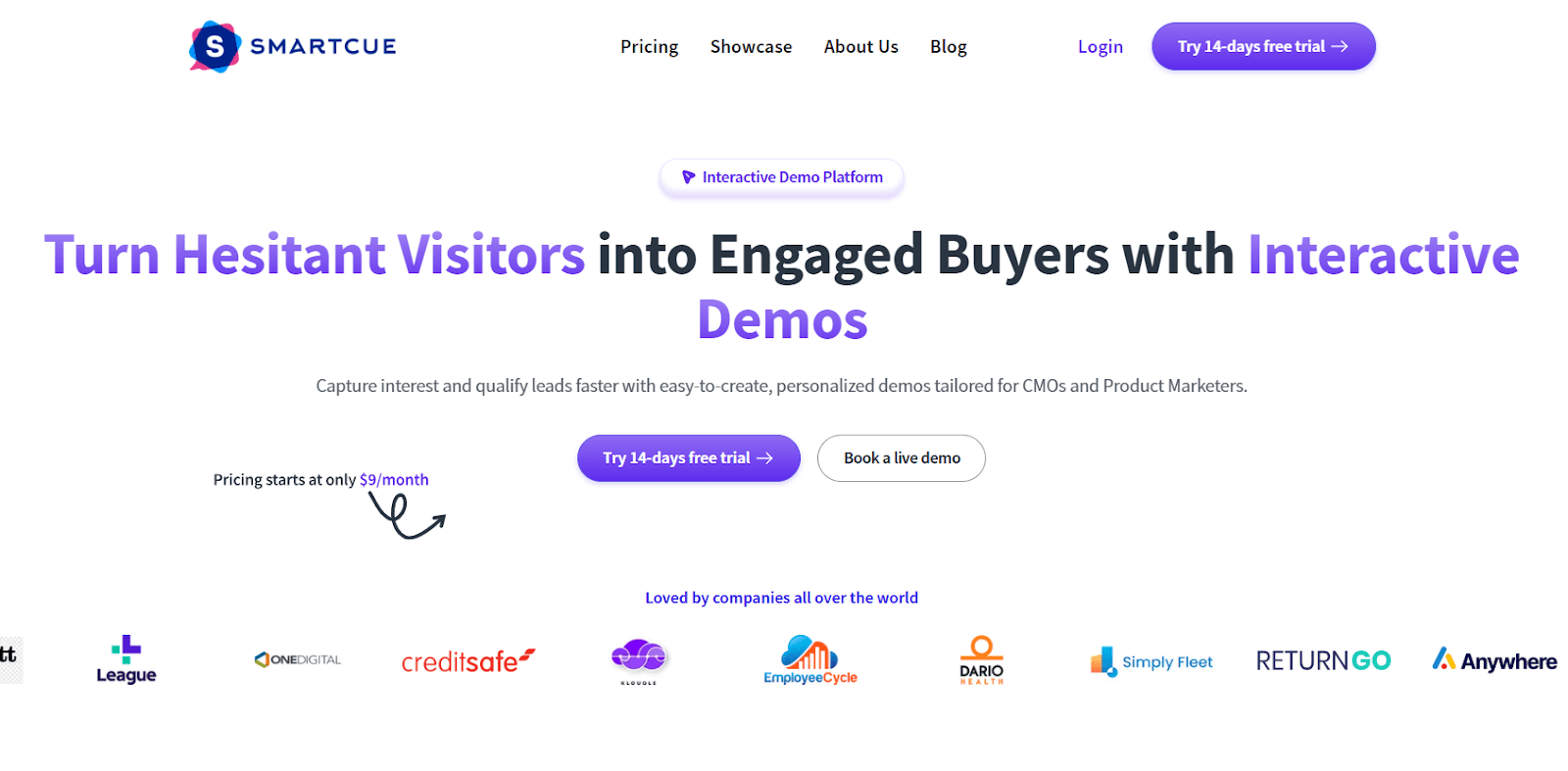
Create your free trial account and access SmartCue’s simple, no-code dashboard. You’ll be ready to start building in minutes.
Step 2: Capture Your Workflow
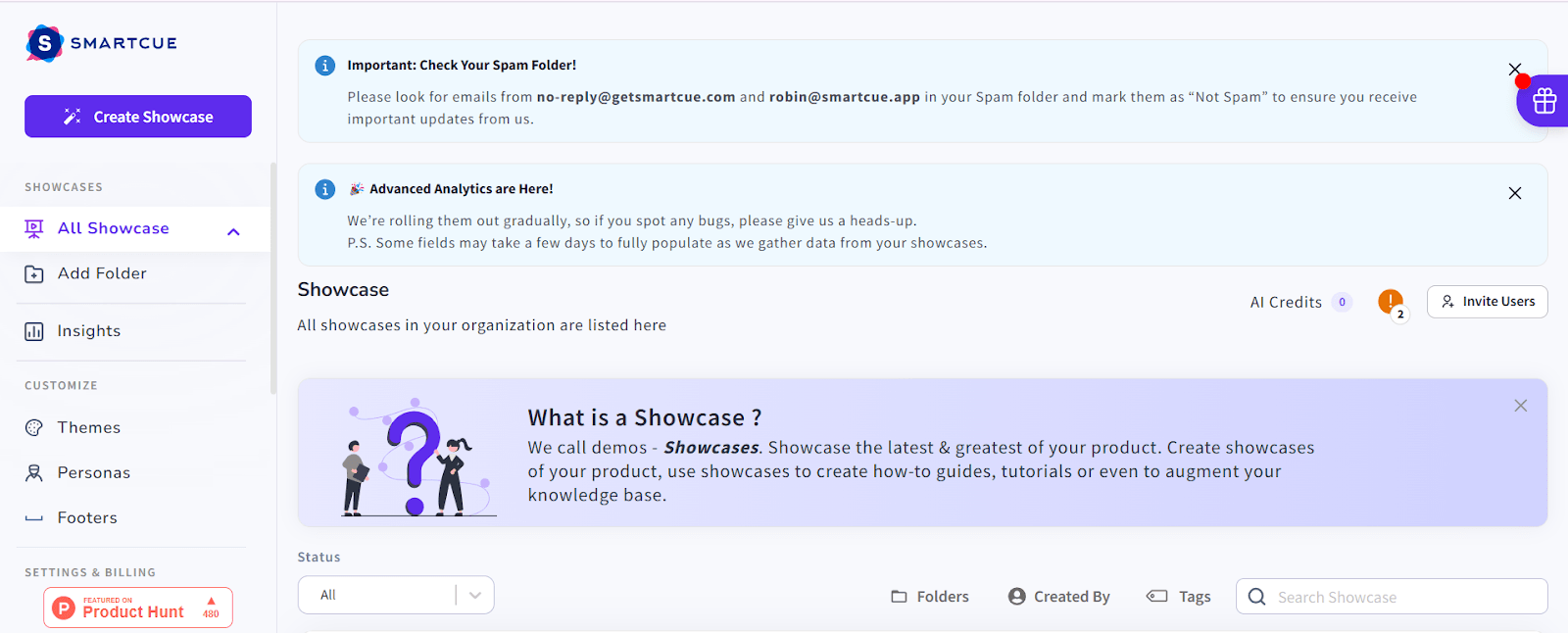
Use the Chrome extension to instantly record actions inside your product, or upload existing assets to build your first showcase.
Step 3: Customize the Experience
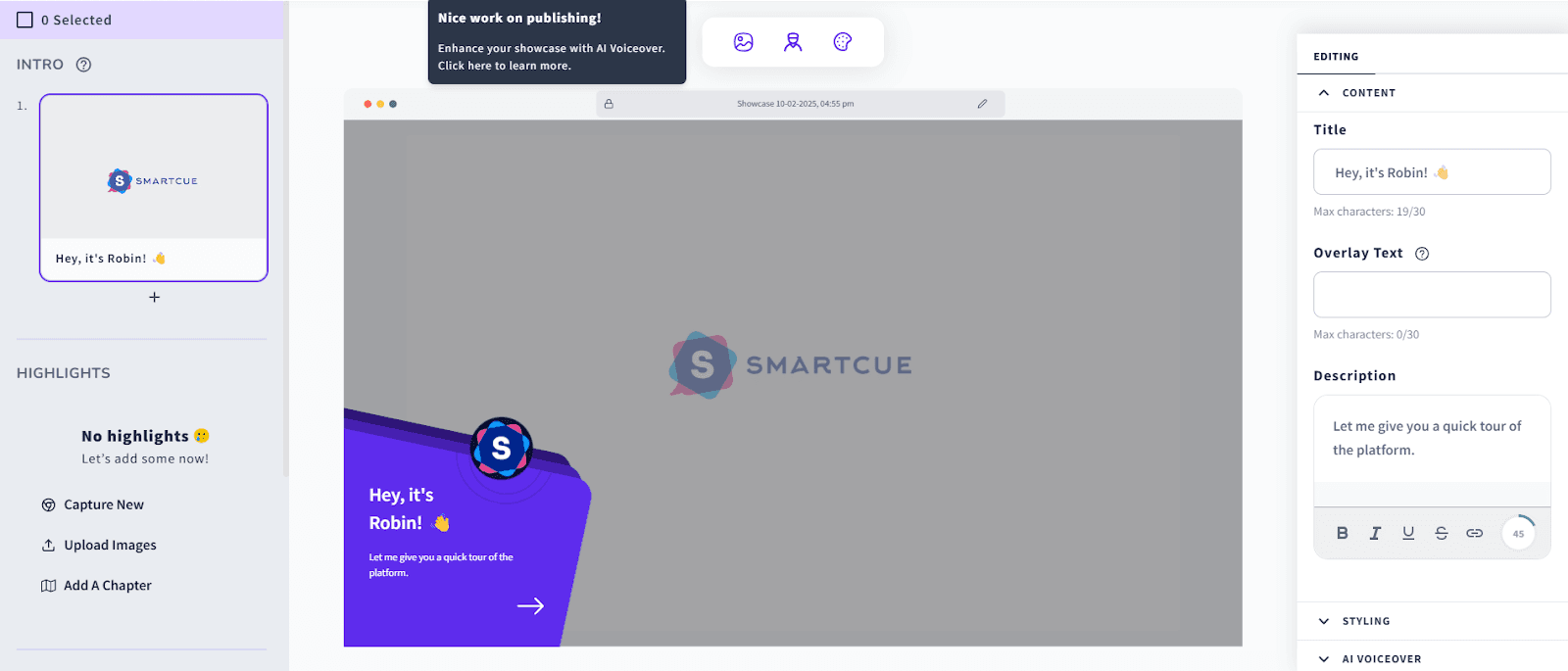
Add context with callouts, zoom in on specific features, and blur sensitive details. You can also organize the flow into sections and tailor different versions for specific audiences.
Step 4: Launch Your Showcase
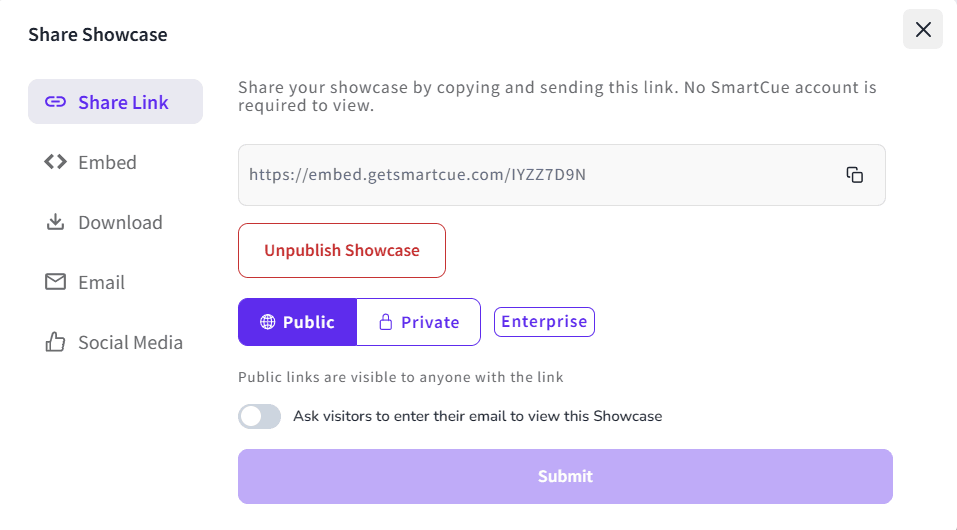
Publish your demo with one click. From there, you can embed it on your site, share secure links with prospects, or export it as a video, PDF, or GIF.
Step 5: Track and Improve
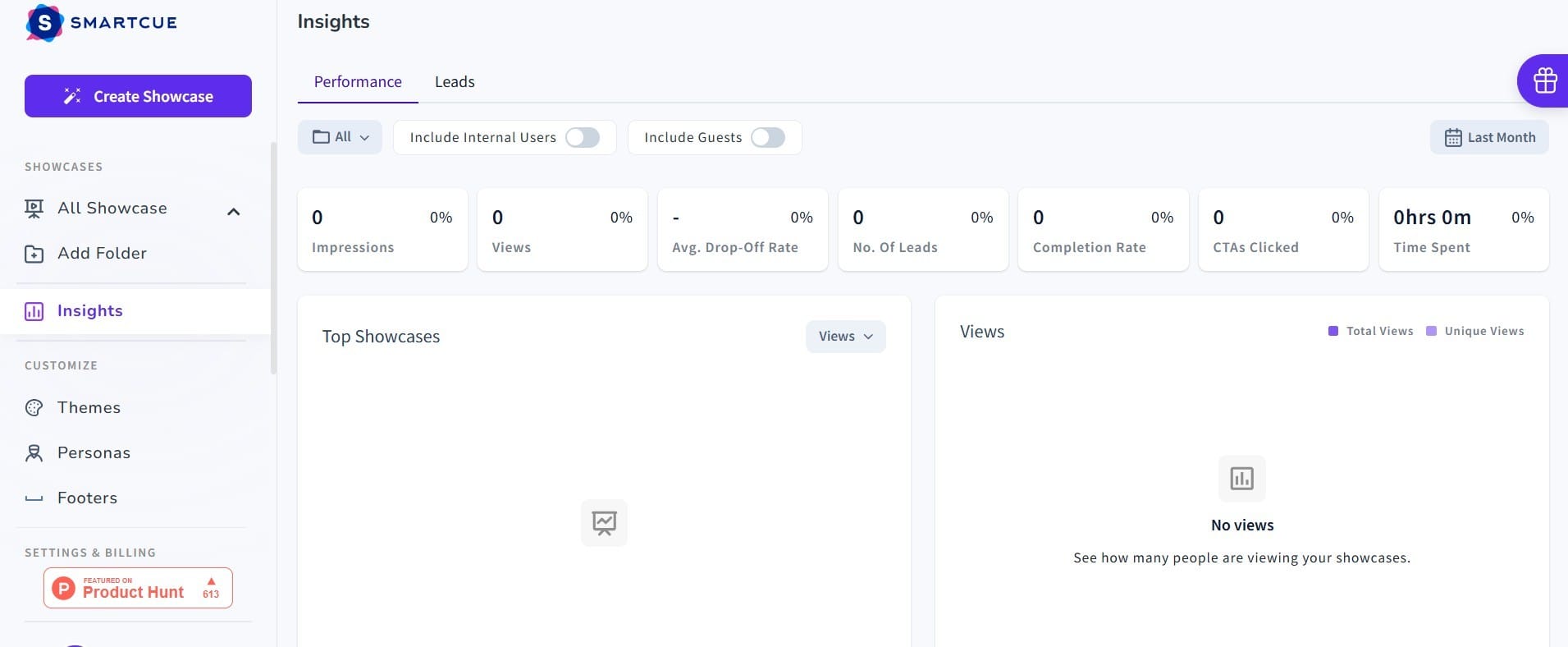
View detailed analytics on how prospects interact with your demo, including time spent and drop-off points. These insights help you qualify leads faster and fine-tune your messaging.
SmartCue goes beyond traditional walkthroughs by turning demos into personalized, data-driven journeys that drive engagement and conversions.
Experience it yourself with a 14-day free trial.
The Choice Is Yours, Now Make It Count
Every new user or prospect is looking for one thing: clarity. They want to see value fast and understand how your product fits into their world.
Whether you guide them inside the app with a walkthrough or spark curiosity with an interactive tour, what matters is delivering that clarity without friction.
Your next move could be the difference between a curious visitor and a loyal customer. So do not wait for them to figure it out on their own. Put the right experience in front of them today.
Frequently Asked Questions
When should I use a product walkthrough instead of a product tour?
Use a walkthrough when logged-in users need guidance with your product’s key features during onboarding. A tour works best on your website to show prospects value before signup, depending on audience needs and goals.
Can I use both walkthroughs and tours together?
Yes! Pairing them creates a smooth onboarding journey. Tours attract and educate new users, while walkthroughs guide them inside the app. This combination boosts retention and ensures users feel supported at every stage.
What makes a product walkthrough or tour truly effective?
An effective walkthrough or tour is concise, engaging, and focused on value. It should quickly lead users to their “aha moment.” Personalization, interactivity, and clarity are essential for maximizing engagement and long-term adoption.
Which tools are recommended for creating product walkthroughs and product tours?
Popular options include SmartCue, Navattic, UserGuiding, Appcues, and Whatfix. These no-code platforms make it easy to create both in-app walkthroughs and external product tours, depending on your business goals.
What steps should I follow to build an engaging product tour?
Define your audience, highlight key features, keep steps simple, add interactivity, and personalize the flow. Tools like SmartCue make it easy to design tours that engage prospects and shorten the buyer journey.
Can you provide examples of successful product walkthroughs and product tours?
Companies like Ramp use tours to preview features without sign-up, while Mixpanel and Fivetran highlight integrations. Walkthroughs often guide users inside the app, offering step-by-step help, making onboarding smooth and boosting retention from the start.
Are there any drawbacks to using product walkthroughs compared to product tours?
Walkthroughs require users to be inside your app, which can create friction. They may overwhelm first-time users if overloaded with steps, whereas tours deliver a lighter, low-commitment experience before prospects sign up or share data.
How do interactive walkthroughs enhance user engagement differently from standard product tours?
Interactive walkthroughs happen inside the app, guiding users in real time and improving onboarding. Unlike tours, which preview features externally, walkthroughs reinforce learning by blending discovery with hands-on usage, leading to stronger product adoption and engagement.
Are there any AI Studios for professional product walkthrough videos?
Yes, AI-powered studios like Storylane, Walnut, and Reprise let teams create polished, interactive product walkthroughs without heavy editing. They use automation, templates, and personalization features to make demos more professional, scalable, and customer-ready.
How do you do product tours?
You create product tours by mapping user journeys, selecting key features, and designing step-by-step interactive flows. Tools like SmartCue allow you to build tours outside your app, share via links or embeds, and track engagement easily.
Comments
Your comment has been submitted successfully!